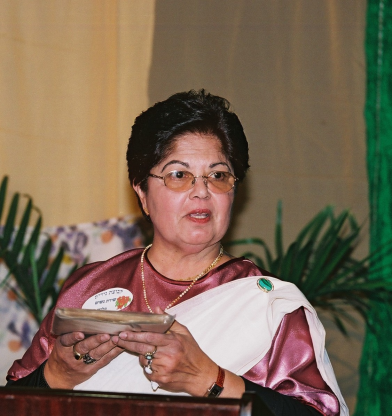This Hassidic style melody depicts an assertive character in sharp contrast to the irony of Bulbe. Stutschewsky constantly emphasized in his writings on the Hassidic nigun the strong faith and devekut that elevated the hassid to states of joy and ecstasy through dance and song:
The deep belief of the Chassidim, their dwejkuth [devotion] in G-od, the almighty, have developed a strong sense for music within their soul. For the Chassid the song and dance are inseparable elements of his belief, and his inner dedication to G-od. The elevated soul of the Chassidim, has enriched their faith and fervor in lively sound filled with joy and enthusiasm. Well-known is the Chassidim emotional ecstasy, their unconditional devotion and faith in G-od abandoned with happiness and inner Rush – up to exhaustion. ---
The Hassidic enthusiastic attitude is emulated by the persistent note repetition which occurs in each bar. Assertive and forward moving, this repetition reflects the perseverance of the Jewish belief:
The Chassidic nigun is splits up to smaller segments with sustained tones; the individual segments are inter-related by repetition on bars from the theme or group of themes. The alterations in the tune-line, the many motivic repetitions and the melisma (the ornaments – “dreidlakh”) do not stand for external impression, as they grow from a necessity to relive and diversify the main melody. ---- We may say that the Chassidic nigun has no beginning and no end. The Chassidic pathos, the Chassidic spirit, the dynamic power of the songs reveal precisely in the repetition on the motive’s structure, in the routine repetition on the many ornaments: to enlighten the mundane, and to praise Shabbat and sacred Holidays.[1]
Stutschewsky’s following statement about the role of repetition and development in the Hassidic nigun truly depicts the present piece:
The Proportions: including, in most cases, a sound logical order; from the numerous tones, motives, phrases, rhythms eventually grows the unity and so we may say: The Diversity is at the same time the Unity![2]
The accompaniment is built almost entirely on octaves, creating an open sound foundation to the melody marked forte. Nevertheless, on the third repetition of a recurring A tone in the second phrase of the melody in bar 6, Stutschewsky introduced a strong clash between the melody’s A natural and the octave on A# in the piano. This clash of the Hassidic tune’ tonality against the dissonance in the piano turned into a signature mark in his developing approach to Eastern European Jewish music.
____________________________________
[1] J. Stutschewsky, ibid., pp. 26–7.
[2] Ibid.





